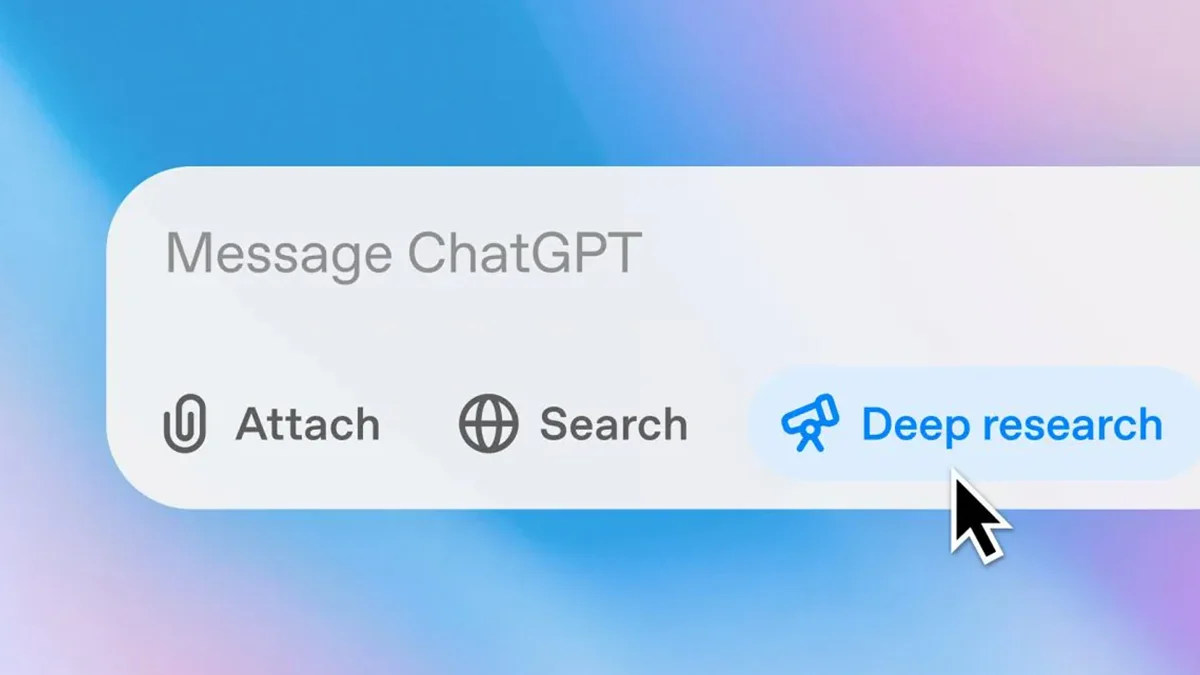Necessary Always Active
Necessary cookies are required to enable the basic features of this site, such as providing secure log-in or adjusting your consent preferences. These cookies do not store any personally identifiable data.
|
||||||
|
||||||
|
||||||
|

OpenAI has unveiled a new AI agent that enables users to conduct in-depth research using ChatGPT. OpenAI deep research is designed for users working in areas such as engineering, finance, policy, and science and are in need of precise, thorough, and reliable research, TechCrunch reported.
The new AI research agent is intended for use in situations where you users are looking for more than quick responses or summaries. Users who want to purchase products like furniture, appliances, and vehicles that require careful research will find the tool useful.
OpenAI said that the launch of the new AI research tool is geo-targeted. The ChatGPT maker did not release a timeline for making the tool accessible to users in Switzerland, the UK, and the European Economic Area.
ChatGPT deep research is designed to derive information from different websites and sources. OpenAI says it will make the new AI tool accessible to ChatGPT Pro users starting February 3, 2025. Users will be limited to conducting 100 queries each month. The AI startup will be introducing support for Team and Plus users in the coming weeks.
Enterprise users will get access much later. The company also said query limits for paid users will be increased soon.
ChatGPT deep research generates text-only outputs at the moment. However, OpenAI is looking to add embedded data visualizations, images, and other output formats in the near future, The company is also working to enhance the tool’s ability to link specialized data sources that include internal and subscription-based sources.
To access the new tool, users have to select the deep research option on the ChatGPT composer before entering a query. Users have an option to attach spreadsheets or attach files. Currently, this option only works for the web as OpenAI works on integrating mobile and desktop app options later this month. The new ChatGPT agent can take between five minutes to generate responses. The tool sends a notification once the search process is completed.
To enhance search result accuracy, OpenAI is relying on a special version of its newly developed o3 AI model. The model was trained on real-world tasks through reinforcement learning. This form of learning involves teaching AI models through trial and error to achieve a particular goal. As the model improves, it is rewarded virtually that makes it better at the task with time.
Despite this training, questions about the level of deep research precision. AI is prone to errors like hallucinations that can be harmful in deep research scenarios. This is probably why OpenAI says each deep research output is “fully documented, with clear citations and a summary of the thinking, making it easy to reference and verify the information.”
OpenAI says its o3 model is designed to power reasoning and interpret huge amounts of text and images.
“Version o3 is optimized for web browsing and data analysis. It leverages reasoning to search, interpret, and analyze massive amounts of text, images, and PDFs on the internet, pivoting as needed in reaction to information it encounters. The model is also able to browse over user-uploaded files,and plot and iterate on graphs using a Python tool, embed both generated graphs and images from websites in its responses, and cite specific sentences or passages from its sources,” the company said.
OpenAI says it has tested the new AI research tool using Humanity’s Last Exam. This evaluation includes subjecting it to over 3,000 expert-level queries across different academic fields. The o3 model that powers the AI tool achieved 26.6% accuracy.
Although this appears like a low grade, the Humanity’s Last Exam is designed to be tougher compared to other benchmarks in order to stay ahead of other model advancements. The accuracy of the deep research o3 model is much higher than that of Grok–2 whose accuracy stands at 3.8%, Gemini Thinking with 6.2%, and GPT-4o with 3.3%.